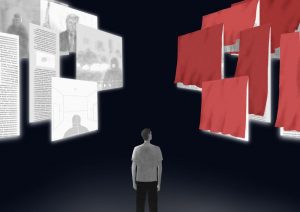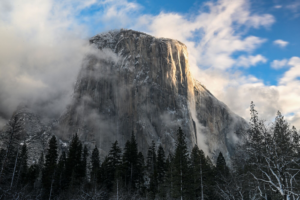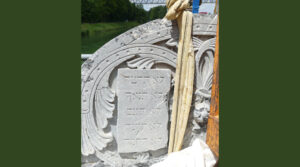Diane TedeschiNovember 11, 2024
On June 20, 1981, Theresa Claiborne was commissioned as a second lieutenant in the U.S. Air Force. The Air Force’s first Black female pilot, Claiborne would become the first Black woman to command and instruct in the Boeing KC-135 Stratotanker during her seven years on active duty and another 13 years in the Reserves. She joined United Airlines in 1990, becoming the carrier’s second Black woman pilot. Flying the line at United for 34 years, Claiborne wrapped up her career as a captain in the Boeing 787 Dreamliner. Her last duty as a pilot took place on May 20–23, a roundtrip from Newark, New Jersey, to Lisbon, Portugal. At United, Claiborne flew multiple aircraft types, including the Boeing 727, 737, 747, 757, and 767. She has logged more than 23,000 flight hours, safely carrying millions of passengers around the world from Cape Town to Tokyo.
With the goal of inspiring a more diverse generation of aviation professionals, Claiborne serves as president of Sisters of the Skies, a nonprofit that offers workshops, mentorships, and scholarships to young women of color. Claiborne recently spoke with Air & Space Quarterly senior editor Diane Tedeschi.
/https://tf-cmsv2-smithsonianmag-media.s3.amazonaws.com/filer_public/87/36/87360435-218a-4381-90ec-90c3897d9b8e/20g_fall2024_interview-claibornearchivalcockpit_347be3a9_live.jpg)
How did your aviation career begin?
It all started with me deciding I wanted to go into the military. I was at college, so I inquired about ROTC, which is Reserve Officers’ Training Corps. I was attending California State University at Sacramento. We did not have an ROTC program, but we would go to Berkeley for ROTC. I made the necessary connections, and part of the program was to attend a six-week training camp. I went down to Vandenberg Air Force Base for my six weeks, and that was the time for the Air Force to look at me and for me to look at the Air Force. When I was at Vandenberg, I got a ride in the T-37, and that was all she wrote. I had flown on airliners before but had never actually been in a small airplane—so this was just huge for me. You’ve probably heard this story from many people. They get a ride on something small, and it’s like, “Oh, my gosh, I’ve got to do this.”
/https://tf-cmsv2-smithsonianmag-media.s3.amazonaws.com/filer_public/8c/f9/8cf90461-cb8a-4ab0-ab98-84c70150a50b/20j_fall2024_interview-cessnat37_df-st-91-10232_live.jpg)
What can you tell me about the flight in the T-37?
It was just an orientation flight. I can’t imagine it lasted more than 30 minutes. We took off out of southern California, and went up to an area and did all kinds of acrobatics. But five minutes would’ve been enough to get me stoked.
Once you got into the Air Force, did you have any role models? Were there people who inspired you?
Just before I got my wings, I found out I was the first Black woman pilot in the Air Force. Up until then, I had no idea. After I graduated, I believe it was Ebony magazine that published an article that said: “Hey, the United States Air Force has its first Black woman pilot. Here she is.” The Tuskegee Airmen organization had a big chapter in Sacramento, and they saw the article and welcomed me with open arms. Of course they were my heroes. I was always thinking, thank God I don’t have to endure the things they had to do. I thank them for everything they did, all the barriers they broke, just to make it a little easier for me.
Fortunately, I had role models when I started my career in commercial aviation. Captain Bill Norwood was the first Black pilot at United. He is an absolutely awesome man. After you graduated from United’s training program, they said: “You’ve completed all this book learning. You’ve been in the simulator. Now, we want you to go out in the real world and sit on the flight deck to see how the crew acts. I was in Sacramento, and I went down to operations, and I walked through the door. There was Captain Norwood, and my mouth just fell open. I knew who he was. I was nervous, and I reached out to shake his hand and said: “Captain Norwood, I’d like to do my over-the-shoulder with you.”
He was always there for me—still is. As a matter of fact, he went on my final flight at United. Another role model at United was Captain Pat Palazzolo. He was a 747 captain whom I flew with on numerous occasions, and I’ll never forget how I would look at him and think: “This is the kind of captain I want to be.” And Pat was another one who came with me on my final flight.
After you got your wings in the Air Force, what kind of reception did you get?
There were some whisperings. I found out from a woman who was an instructor at Laughlin Air Force Base in Texas that some of the guys were saying: “Well, she’s too short.” (I’m 5’2”.) This woman was my angel, because she told them: “Theresa is here. She did everything she needed to do to get here. Yeah, she’s short, but let her fly the airplane. Give her an opportunity.”
There were occasional awkward moments. After I started flying the KC-135, whenever we had mass briefings with the fighters (if we were going out on a joint mission), it was very common for the commander to walk in and start the briefing by saying: “Good morning, gentlemen.” Sometimes, I was the only woman there. But even if there were other women in the briefing, they would still address the group as if it was men only. There were times when I was quite sassy, and I would say: “Yes, ma’am.” Now did the commander hear that? Probably not, but the people around me certainly did. I have to say, though, that during my time in the Air Force, there were so many wonderful male pilots—I’d fly with them any day.
/https://tf-cmsv2-smithsonianmag-media.s3.amazonaws.com/filer_public/a8/0f/a80f41d7-0251-4649-bd06-b53fd0c28598/20b_fall2024_interview-kc135andf16bedwards_live.jpg)
Did it sometimes feel like a burden to be the Air Force’s first Black female pilot?
I had mixed feelings about it. When I graduated from pilot training, we knew at that point that I was the first Black woman pilot in the Air Force, and the command structure also found out. Yet they would not allow any reporters onto the base to cover it. What I was told by a secretary was that the command structure said: “Hey, she’s no more important than anyone else in this graduating class, therefore I won’t have any reporters on my base.” Instead, they told the public affairs office to issue a press release. It was September 1982, and I was told at the time that Newsweek, Time, and many other publications wanted to cover the story. But since reporters weren’t allowed on base, these publications then said: “No, we don’t want your story.” But Ebony magazine said: “This is important. We’ll take whatever you can give us.” Ebony published the story a few months later.
After that, my instinct was to just be real quiet about my breakthrough in the Air Force. I didn’t walk around telling people, and I remember when the Ebony article came out, a few people found out and it was like: “Whoa, we didn’t know this.” And I said, “Yeah.” Even at United, many people did not know about my accomplishments until probably the last five years I was there. Because I didn’t walk around with that on my sleeve. I’m just now getting to the point where I’m realizing that I do have a responsibility to continue what we started. Young girls need to know. At Sisters of the Skies, we talk about my career. If they can see it, they can be it.
/https://tf-cmsv2-smithsonianmag-media.s3.amazonaws.com/filer_public/93/2b/932b32ac-9b57-43ed-b173-f1968c50e011/20i_fall2024_interview-claibornearchival_92f88538_live.jpg)
How much say did you have in what type of aircraft you would fly for the Air Force?
Back then, women were not allowed to fly fighters, so there were only about five different airframes we could choose from. There were a couple versions of the KC-135, and there was at least one model of the C-130. We could also be T-37 or T-38 pilots, and we could fly C-5s and C-141s. We called it a dream sheet, and you wrote down what you wanted. My first choice was a C-141 and then a C-5, because it was part of Military Airlift Command at the time. And that’s what I wanted to do. I was young, and I wanted to fly all over the world. We had what we called “assignment drop night,” and I remember getting the KC-135, along with a few others. Some of the guys in my class got assigned to the B-52. I remember having a long face, and the commander looked at a bunch of us who were complaining that we got a KC-135, and he said: “What’s wrong with y’all?” And I said: “I wanted a -141.” “Me too,” said a few of the other pilots. The commander looked at us and said: “You know what? A month ago, all you wanted to do was graduate. I want you to remember that. And now you’re complaining because you got a KC-135.” We all looked at each other and said: “He’s got a point there.” The KC-135 wasn’t my first choice, but it was an awesome airplane.
What made the KC-135 so awesome?
Listen, a KC-135 is basically a Boeing 707. A little bit stretched here, there; a bigger rudder here, there. But it’s a Boeing, and it’s a four-engine heavy aircraft. As far as I’m concerned, it’s a beautiful airplane—one of the most gorgeous airplanes. A Boeing through and through. I absolutely loved it, and when I got off active duty and went to the Reserves, there was not one airplane at my reserve base that was younger than myself. So not only did I like the KC-135, but so did the military. We just now have the new airframe. We’ve got the KC-10—we did do that—and now they transitioned to the military version of the 767 that’s a tanker. But you know what? They’re still flying KC-135s. What does that tell you? It’s a wonderful airplane.
What qualities are required to be a good tanker pilot?
Flying tankers, well, it’s not like being a fighter pilot—we used to call them good sticks. Fighter pilots have to be quick, fast thinking, and good with their hands. As a tanker pilot, you fly up to altitude where you’re a platform for the receiver. You’re in a large, heavy airplane so it’s important to fly smooth and pay attention to details.
Did you fly a refueling mission that was particularly challenging?
I can’t think of anything specific that was really harrowing. Nothing like that. I was on my share of missions where we’re dragging fighters, that’s what we call it—“dragging”—when we’re traveling with a group of fighters. We’re taking them across the pond. They don’t have the fuel to make it all the way across, so they need us to refuel. This capability is what made the United States Air Force such a great warfighting machine. The tanker community had a little saying: “No one kicks ass without tanker gas.”
There were always times when someone said, “hey, I need this much fuel,” and I wouldn’t say we were stingy, but there was a plan. There was always a plan of how much fuel each fighter got. It was set out before the mission, but there were times when people would burn more fuel than they expected. Or someone had an emergency, and you had to take them a little further—you had to give them a little extra gas. And the whole time you’re figuring, okay, well, I need to make sure that I’mgoing to have enough gas. Those juggling situations happened a lot.
Aside from that, I’ve lost an engine in flight, but listen, that’s what we train for. So that was no big deal. I also lost water-injection back in the day—on the runway for takeoff, which meant I had to abort the takeoff. Even that, we trained for, so I can’t say there was ever a time when I was petrified and didn’t know how to handle the situation. I did fly over some active combat zones, like the conflict in Kosovo. I can remember doing a refueling at a very low altitude, and the KC-135, it’s a flying gas station, and we don’t have weapons. So those days were harrowing. I won’t lie about that.
When you were refueling aircraft flying into combat, how much did you know about the missions they were about to fly?
We don’t always know what happens. We don’t. But during times of conflict—Desert Shield, Desert Storm—we get briefings, maybe not with them, but we get briefings about the threats that are out there and what our forces are doing. I’m not going to say we were briefed on specifics, exact targets, for example. But we knew enough to know what the importance of our mission was. You’re in it to win it, and so there were times when we knew, yep, this is what they’re going to do. We’re going to take them up, and they’re going to go do their business. And then they’ll be coming back to the tanker to top off.
/https://tf-cmsv2-smithsonianmag-media.s3.amazonaws.com/filer_public/68/b0/68b0c783-619e-4a81-8e94-f536e05e2ff5/20n_fall2024_interview-747_8091892441_803bf1fc97_live.jpg)
How can we get more diversity in the ranks of both military pilots and airline pilots?
There’s a lot of noise out there about people not being qualified. Listen, if you make it in the aviation industry, you are qualified. You have proven yourself. We all have the same instructors; we have the same evaluators. There’s not a set for Black people, there’s not a set that’s for women. My job, even though I’m no longer an active pilot, is to continue to mentor and inspire. My job is to make sure that young girls—and young men—know that aviation is an opportunity for them.
You flew many different airplane types. Did you have a favorite?
The Boeing 747-400—the queen of the skies. The 747 is by far, hands down, my favorite airplane of all time. I do consider myself a Boeing baby. I never felt like I had any reason to fly Airbus. Although I did think that the Airbus A350 is a nice-looking airplane.
/https://tf-cmsv2-smithsonianmag-media.s3.amazonaws.com/filer_public/0d/c4/0dc4c53e-1ae7-4dec-bf5c-b993aa8caf29/20f_fall2024_interview-claiborne_candid_6469_live.jpg)
Tell us about your last flight at United.
It was amazing. I must’ve had at least 20 friends and family on the flight, including my mother, brother, and niece. My mentors were there too, and a lot of my Sisters of the Skies were there—people whom I’ve mentored. We left for Lisbon on May 20. The flight was about six hours, and we had two days on the ground in Lisbon. We were all thinking, let’s go somewhere, let’s have some fun, let’s enjoy ourselves. And then the flight home will be my last hurrah.
I’ve had a wonderful career, and I felt like there really wasn’t a whole lot more I needed to do to prove to anyone that I deserved to be there. Although it was a proving ground every time I went on a flight. Trust me, every time I flew an airplane, I said to myself: “Okay, Theresa, you need to fly this airplane, you need to be safe.” And of course the entire way home, I’m thinking: “Okay, this is your final landing coming up. You better make a nice one because mom is on the airplane.” Normally, you have an airplane with 300 passengers who don’t know you. If the landing is a bit firm, they don’t know you. I have a lot of folks on this airplane that know me, so I was determined to make a smooth landing, and my landing was beautiful—absolutely beautiful. So what more could a girl ask for?
/https://tf-cmsv2-smithsonianmag-media.s3.amazonaws.com/filer_public/7b/fd/7bfd2b8f-aefc-4b61-b129-0904769bb3ac/20d_fall2024_interview-claibornesistersoftheskies_6685_live.jpg)
When you pulled into the gate at Newark, did you acknowledge the finality of the moment?
Yes, there were little pangs of: This is your last time, Theresa. You’re not going to do this anymore. Not in a big jet. I don’t remember any tears except for when I walked into the airport and people were cheering me, saying: “Thank you, Theresa. We appreciate everything you’ve done for us. Done for women, done for Black folks.” Yeah, that was amazing.
There were also a few tears at the beginning of the trip. There was a large entourage of military people that came for that final push-back out of Newark on the way to Lisbon, and there was a young man who is a junior ROTC student. I could see him standing in the terminal through the glass as we were getting ready to push back. We released the brakes, and I’m not kidding you, this young man snapped to attention and saluted me. And I saluted him back. I shed a few tears, because I’m looking at this kid and I’m thinking, “You know what, kid? You can be what you want to be.”




